I hear a lot about how being plant based, vegetarian or vegan can be damaging and bad for your periods and fertility and a list of reasons as to why, and I even know a number of people who work with people with fertility and period problems who do not work with vegans, because it’s hard!
However, I haven’t seen a list of pointers to help out people who are vegan but want to give their cycle a helping hand. So vegans who are interested in your periods and fertility, this is for you.
I don’t advocate for any particular diet when it comes to periods, as we are all so unique and need to figure it out for ourselves in terms of what works for us. But I do know that with different diet and lifestyle choices, it can be challenging when trying to optimise your health, whether you are consuming a, vegan, vegetarian, paleo, high carb, low carb, South Beach or any other kind of diet, it can be useful to have some pointers to make sure you are aware of all the potential issues, and hopefully overcome them so you can live in harmony with your beliefs and body.
This post is focussing on veganism (with some options for people who are vegetarians), but don’t worry, there will be some posts for the rest of you in the future. Moving on to a vegetarian or vegan diet can be very rewarding if it means you are in alignment with your beliefs or principals, and if done well, can be incredibly nutrient dense and help people to thrive.
However, it can be tough if you want to be vegan or vegetarian, and what to make sure you are doing it in a healthy way, and are told “it’s fine, just do your research”, (believe me I have seen this phrase used a lot on social media), but you have no idea what research to do or where to start and let’s be honest, the internet can be overwhelming.
The vegan diet can be tough, especially with certain underlying health conditions such as coeliac, diabetes or allergies, but even if you have no underlying health issues, it is a little tougher than other nutritional regimes. That doesn’t mean it’s impossible, it just requires a little more effort and knowing where to start with your research.
This aim of this post is to give you some ideas on what to factor in when considering a vegan diet or, if you are vegan and having issues with your periods and health, some areas to look into. It is not intended to be a compendium for all things vegan, as everyone has their own individual needs and requirements when it comes to nutrition.

Some Myths About Veganism & Periods
Myth 1: “All Vegan Foods Are Healthy/All Vegan Diets Are Healthy”
I once signed up to a vegan newsletter and the first e-mail I got was how all my favourite foods are vegan. It then listed; a load of sweets (candy to my US friends), some well known biscuit brands (cookies), crisps (chips), chips (fries), well known ice cream brands with vegan variants, and a tonne of pre-prepared meals that were basically ultra processed pasta and rice with a sauce.
Vegan diets can be healthy and done very well, with no signs of issues, especially if you check out the tips below, but, there are times when it is done in a way that is not conducive to optimal health and the period will show it first.
Myth 2: “Everyone Can Be Vegan”
This is going to upset a few people, but unfortunately, a lot of vegan foods contain common allergens, especially protein replacements containing gluten and soy, (forgetting that soy can cause hormonal disturbances in some people), which can trigger autoimmune disease in some people.
There are also a lot of allergens, especially if you have allergies to nuts, seeds and legumes. Add on top strawberry, kiwi, mustard, celery allergies, some people with all these allergies and more, their dietary choices are so restricted, restricting their diet further could be dangerous, equally, consuming these foods could be dangerous.
This is a complex issue, especially as there are now people out there who don’t believe in anaphylaxis or food allergies, making it more difficult and less safe for people with food allergies. So please, if you have an allergy, read the labels, ask outright questions about ingredients and don’t be afraid of declining food if you don’t think it’s safe for you to eat.
However, if you are struggling, you don’t have to throw in the towel completely. It might be that you can be a flexitarian or eat a mostly vegan diet with a few moderations like occasional fish or eggs.
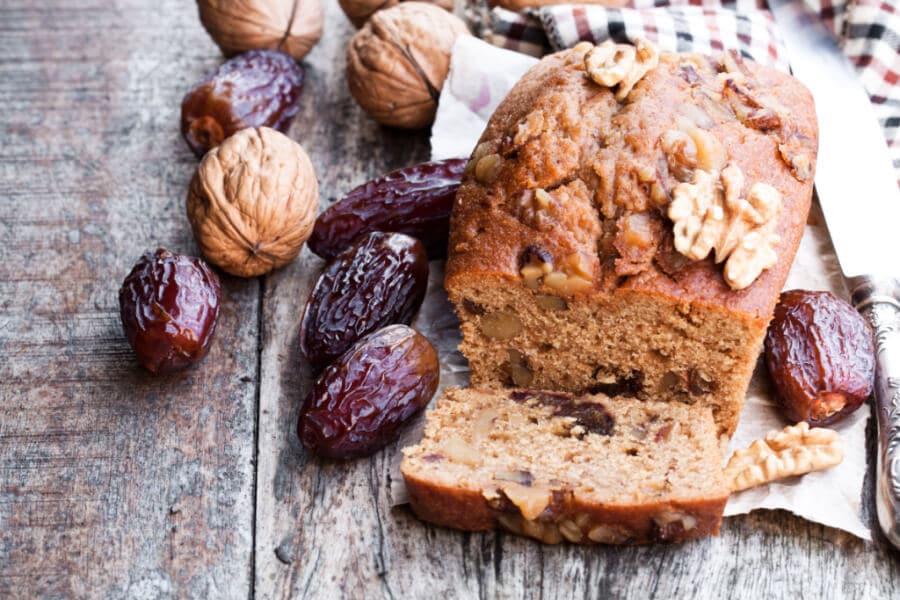
Myth 3: If You Are Doing Veganism Right, You Will Detox Yourself So That You Hardly Have Any Periods
I have seen a number of posts going around social media over the years about going vegan to detox away your periods and that periods are part of the detoxification process. However, this is very worrying advice.
Having a regular period with a good quality flow on a regular basis is a sign of ovulation and a sign of health. Ovulation is needed for many processes in the body, including breast development, bone density, and heart health, so suppressing this process could create some unintended severe consequences, which is why knowing your flow could literally be a lifesaver.
Signs of a healthy period include 3-7 days of flow, an actual flow, not too heavy, not too light, a beautiful bright red colour, appearing every 26-35 days. Pain and PMS are a sign that something is wrong
If your period is disappearing or you are getting some funky symptoms that indicate you aren’t well and thriving, then now is a good time to review what is going on with your health and pivot. That doesn’t mean you have to give up being a vegan, it just means that you need to tweak some part of your diet, experiment and figure out what works for you.
So, now we have some of the common myths out the way, let’s take a look at what you can take a look at what areas you should research and check that you are optimising your diet and nutritional intake. This isn’t exhaustive, but it will give you a strong foundation to get going.

The Big Four
These are the top level things that can if not looked at, can cause immediate visible health issues straight away.
1. Blood Sugar Stability
This is one of the four biggest issues I see with vegan clients, because there are a number of fruits, and other carbohydrate foods that can spike blood sugar and therefore insulin. This can lead to blood sugar level issues such as feeling shaky or hungry between meals, through to insulin resistance, which can cause PCOS, right through to pre-diabetes and diabetes.
If you are needing to eat between meals or struggle to go 4-5 hours without food, need a mid morning, mid afternoon or evening pick me up before bed, this is a sign that your blood sugar levels could be more stable.
Fix: first of all, it is a great idea to start testing your blood glucose levels. You can purchase monitors over the counter from most pharmacies. If you have signs of insulin resistance, PCOS, or are worried, please see your doctor to make sure that you don’t have any underlying issue first.
Next start looking at including protein and fat with every meal and snack. These are important to help stabilise insulin and blood sugar levels. But be aware, yes, grains contain protein as well as carbohydrates, but you want to stick to good quality fats and proteins such as a good quality nut butter (not one with a tonne of added sugar), avocado, coconut, and olives.
A great snack my friends eat a lot is apple slices with peanut butter. Apples are low glycaemic index and good quality nut butters without extra sugar, can have a decent fat and protein content.
Take a look at the Glycaemic Index and Glycaemic Loads of foods. Some amazing yummy foods such as mango and pineapple can really spike your blood sugar levels, and I used to love frequenting a market that sold amazing Italian pasta dishes in take away containers, which were heavenly. I cannot oversell how amazing these dishes were, they knocked me out afterwards as I would faint going into a hypoglycaemic attack rendering me completely unconscious or sometimes just very sleepy, but my body just could not tolerate higher GI foods.
A favourite amongst all health and wellness enthusiasts are fruit and vegetable juices. I also love these, but they can play havoc on your blood glucose and insulin levels if you don’t have them under control. Smoothies are a better option because the fibre coats the gut and slows down absorption reducing the blood sugar (and sometimes insulin) spike, and adding in fats and proteins can help smooth out the spike further.
Finally, make sure you get enough sleep. Not getting the optimal amount of sleep for your body’s unique needs, can result in increased insulin sensitivity and screw up your hunger and satiety hormones.
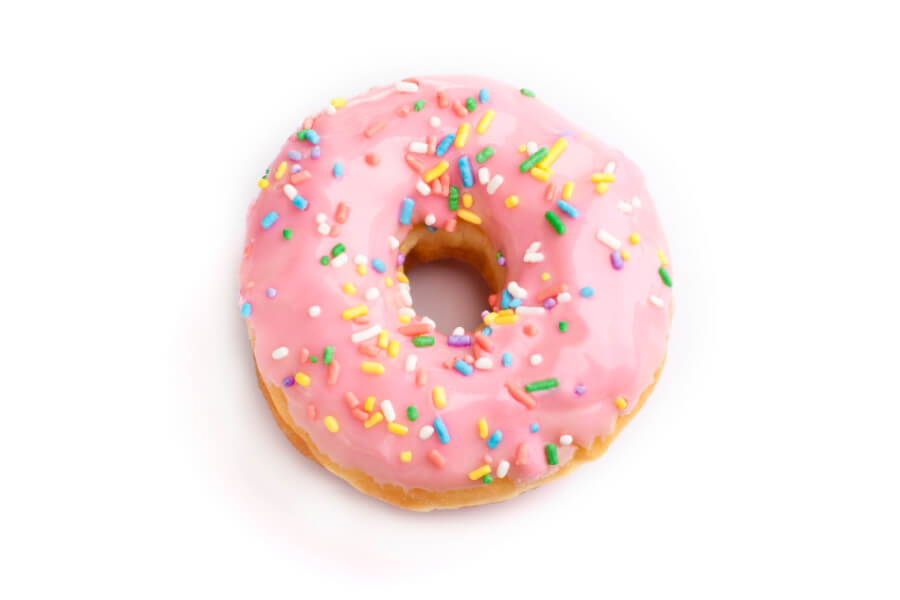
2. Not Getting Enough Fat
Eating enough fat for healthy hormones and the amount of exercise you do is crucial for hormonal health. Healthy fats are needed to make cholesterol which is an essential ingredient for making hormones necessary for reproduction, as well as being an important part of the brain structure and a component of all your cells. It can be very easy if you are on a raw vegan diet or a diet rich in fruits and vegetables (which is great for micronutrients) to not consume enough fats.
We also need fats in order to absorb fat soluble nutrients such as vitamins A, D, E and K, all of which have different roles to play in our overall and reproductive health.
If you pair a low fat intake with an intensive exercise regime, then this could potentially push your body goes into hypothalamic amenorrhoea. Basically, you don’t have the excess nutrients for the “optional” reproductive system, as your body is trying to prioritise resources.
Why did I put optional in speech marks? Well, regular ovulation is needed for bone density, breast health and heart health as well as a number of other processes in our bodies, so whilst it may seem great to switch off our reproductive system and not worry about periods or fertility, it isn’t the best option for your overall health.
If you are not getting enough dietary healthy fats, you may have very long cycles, short periods, light scanty periods which are pink or orange in colour.
Make sure you are getting enough fat, and all the fatty acids from healthy sources such as nuts, seeds, olives, coconut, and avocados. Also focus on mono and polyunsaturated fats (I love that the acronyms for these are MUFAs and PUFAs), which can increase HDL which transports cholesterol back to the liver and lower LDL, which transports cholesterol to the artery walls. Trans fats, however, which can be abundant in a lot of highly processed vegan foods often increase LDL and lower HDL.
Fat can also help with satiety and ensure you feel full after eating which is why I try to have some with every meal or snack.
Fat can also play a role in inflammation. I cover this below and have some videos on this but the gist is omega 3 fatty acids are anti-inflammatory and omega 6s are mostly inflammatory. This is a little bit of an over generalisation as there are some “good” omega 6 fats. We actually need a balance of both but our modern diets often see a higher amount of omega 6. This can increase symptoms of inflammation such as period pain and auto immune related conditions such as endometriosis and thyroid issues.
Rancid fats and fats that have gone past their smoke point can also be problematic and cause inflammation in some people which is why I love olive and coconut oils for cooking.
Most people need between 30-50% of their dietary intake to include fat, and some even more, but please don’t be afraid of fats, I know we have been conditioned to be wary of dietary fat but it is essential to our health.
This is a great opportunity for you to research and explore the different fats available and see how you can incorporate them into your diet and reduce the less hormonally friendly fats.
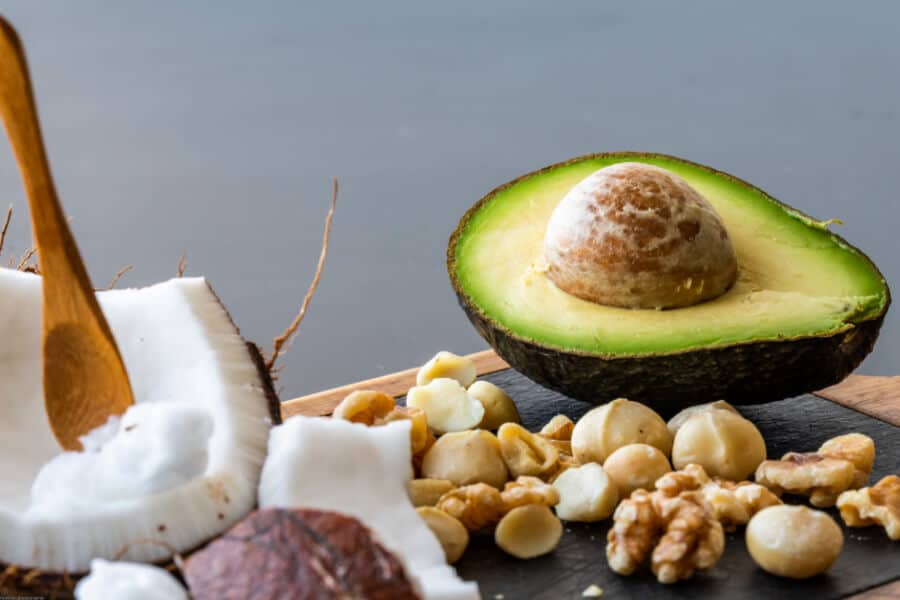
3. Not Getting Enough Protein
I know vegans get a lot of lectures on protein, and I can almost hear collective groaning in my head when as I write this, but hopefully this will be worth it for some of you. Proteins should make up around 20-25% of your diet and I like to consume around 75-100 grams a day.
We need protein and the amino acids that make it up for a number of functions in our bodies. To build our tissues (including our reproductive tissues), but also for our hormones and neurotransmitters. We need to ensure that we are eating enough protein and getting a good mix of proteins.
There are 9 essential amino acids, essential meaning that we don’t make them in our bodies, so we need to ensure we get in our diet. We can get all these amino acids from plant sources, but it is more difficult for our bodies to access it as they often contain anti-nutrients, although in many cases these can be dealt with by soaking and cooking them properly.
One protein option that is often recommended is soy. It does contain all the essential amino acids, however, soy can cause problems for people with oestrogen issues and, can contain pesticides that can be problematic for some people.
Unfortunately, a lot of “fake meats” are made from soy. There are some companies such as the Vegetarian Butcher that use good quality organic soy, so if soy doesn’t affect your hormones in a bad way, you should do some research to find ones available in your country.
In all honesty, rather than trying to recreate meat, I prefer just to go for something like a beetroot or bean burger which is clearly not going to be the same as a meat burger, but that is my personal preference.
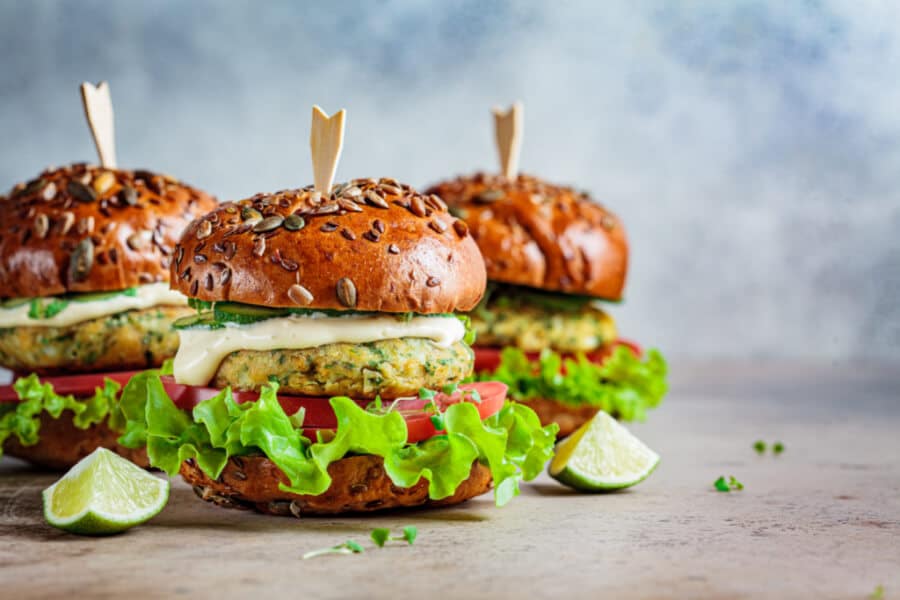
There are also forms of soy which are more hormone friendly that are usually fermented such as tempeh, natto and miso. I have a whole blog post on soy you should check out to find out more.
A lot of meat alternatives contain gluten too, which can cause autoimmune issues, inflammation and thyroid issues in some people, all of which are not great for periods. Seitan is a relatively common meat substitute made from gluten. This can be a tricky one to navigate, however being aware of ingredients in “fake meats” and paying attention to how they affect your body and hormones is the key here.
Another option which I don’t hear discussed very often is protein combining. This essentially splits all the plant based proteins such as nuts and seeds, legumes, grains and cereals into different groups of proteins and you need to ensure that you eat a combination from each group over each 24 hour period. This is a way to ensure you cover all or most of the essential amino acids on a regular bases and is well worth researching if you want to ensure a long term plant based protein lifestyle.
There are also options such as vegan protein powders which can be great, but I advocate trying to get a good portion of your protein from your actual foods rather than relying on supplementing with protein powders. That being said, a lot of people like a good quality protein smoothie or shake for breakfast, and if that is you, then this option can work well.
If you choose to go down this route, I like a hemp seed powders, although some sourced can be low in lysine so you may need to look at lysine containing foods such as spirulina, fenugreek seeds and soy, (taking into account whether soy may or may not be great for you individually), in order to make up that deficit.
One word of caution about protein though. Some conditions that are insulin related such as Polycystic Ovarian Syndrome (PCOS), insulin resistance, pre diabetes and diabetes can find vegan diets very difficult to follow and to maintain stable insulin levels due to the amount of carbohydrates consumed which must be balanced with fat and proteins. Also, if you eat too much protein, your body can convert it to sugar.
If you are vegan and have an insulin or blood sugar related issue, and are struggling with your hormones, I highly recommend seeking individual support to help you navigate this as it does require a lot of investigating, testing and planning. It’s not impossible, but it is difficult.
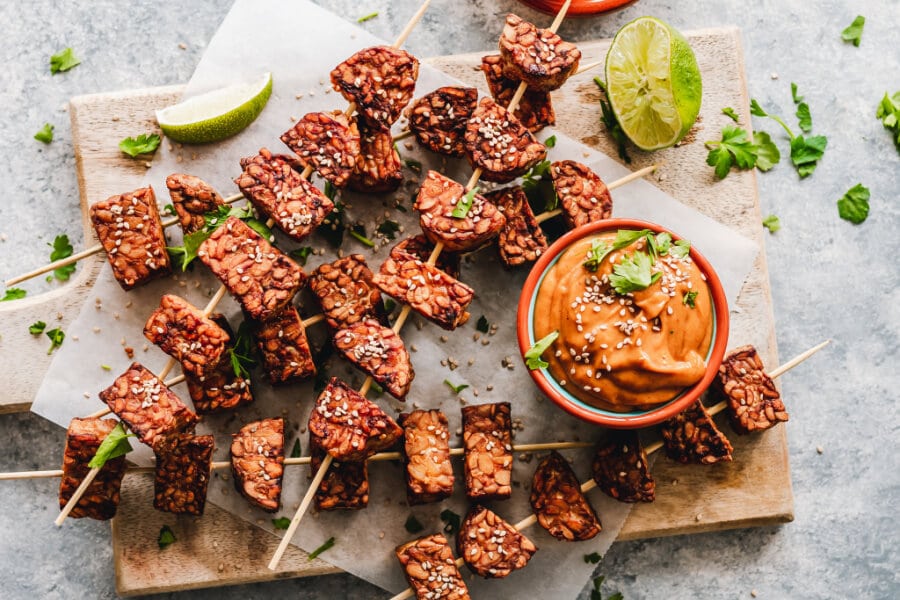
4. Not Getting Enough Nutrients
If you are eating nutrient dense foods, especially if you are not eating any animal protein or fat, it can be really hard to meet your energy requirements for the day which is one of the reason that people who do a nutrient rich vegan diet lose a lot of weight quickly.
If we look at animals that eat only plants, a lot of them spend a good part of the day doing nothing but eating and digesting.
It’s crucial that you are meeting your body’s energy needs, and that means making sure that you are getting enough fat (9 calories per gram as opposed to carbohydrates and protein which have 5 calories per gram) and complex carbohydrates to support your lifestyle.
I am not a fan of calorie counting, but advocate paying attention to your body. If you are leading an active lifestyle and are only eating 1000 calories a day, then you may see this reflected in your hormones and period.
It can also be tempting to just top up with fruit juices, but this is where you need to pay attention to the balancing act of making sure you keep your blood sugar levels balanced, you are eating enough fat and protein and you are getting enough calories for your needs. This can take a few months to get right but it is important if you want to optimise your hormonal and reproductive health.

Other Considerations
OK, so that was some of the bigger picture level, let’s dive in deeper. These issues are just as important, but may take a while to show up as health issues.
5. The Omega 3:6 Ratio
As well as fats being pre-cursors to hormones, they also have a role to play in the inflammatory response in the body. I have done a video on this, however, here is the quick and simplified version. Part of the membranes of each cell of our bodies is made up of fatty acids. Our bodies need cell membranes that are an approximate ratio of 50% omega 3 and 50% omega 6. Omega 3s are anti-inflammatory and omega 6s are inflammatory.
We do need the inflammatory membranes to help heal, for example, if you cut yourself, you want inflammation to fight off any pathogens in the area and then an anti-inflammatory response to calm that down. Out of control anti-inflammatory responses can cause a whole host of inflammatory or auto immune related conditions.
This could result in more pain related conditions such as period pain, and other inflammatory conditions such as thyroid conditions and endometriosis, both of which can cause heavier and more painful periods (as well as a plethora of other symptoms) and potentially exacerbate any immune related fertility issues.
Unfortunately, many diets, in particular those with heavily processed foods are higher in omega 6 fatty acids which can skew the ratio in favour of inflammation. We do still need omega 6 foods, just in a better proportion.
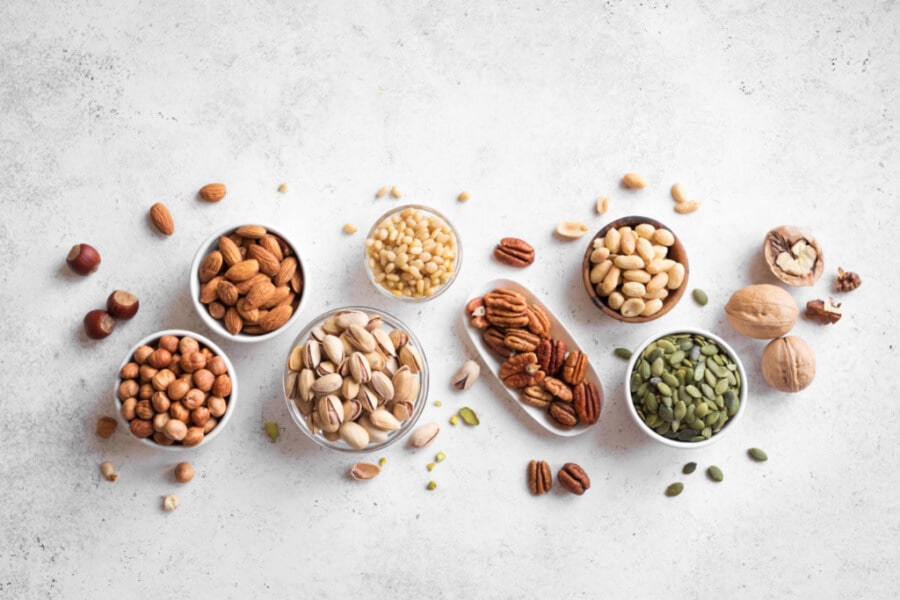
There are some studies that are thought to indicate that omega 3 fatty acids could improve ovarian ageing and egg quality, (although these are animal studies, they may still be relevant).
Foods that are high in omega 3s and are not seafood based include: seaweed and algae (think chlorella and spirulina), hemp seeds, chia seeds, flaxseeds, walnuts, edamame beans, kidney beans, pumpkin seeds, hazelnuts and peanuts.
Foods that are high in omega. 6s and are not red meats include: almonds, cashews, sunflower seeds, walnuts, hemp seeds, macadamia nuts, pine nuts, pecans, and pistachio nuts.
As you can see, some sources straddle both lists, and that is fine. The imbalance is usually more prevalent in a diet with animal protein, however, if you see yourself heavily biased towards foods on the omega 6 list and you think you are having auto-immune issues, then it’s worth trying to re-balance.
In my personal experience, vegan clients who eat mostly fresh and whole foods tend to have a good balance of omega 3 and 6 fatty acids when we look at their food diaries and symptoms. Where as those who eat more pre-prepared processed meals such as microwave meals, tend to see the ratio in favour in omega 6. However, if you want to make sure, there are a number of at home omega 3:6 ratio tests you can order online.
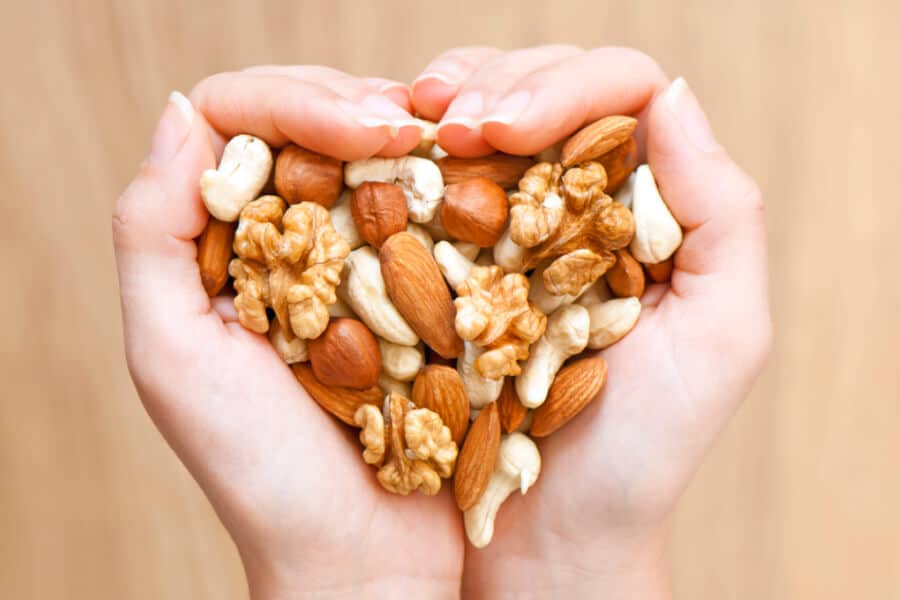
6. Omega 3s: EPA and DHA
There are three main types of omega-3 fatty acids: alpha-linolenic acid (ALA), eicosapentaenoic acid (EPA) and docosahexaenoic acid (DHA). DHA and EPA are most commonly found in seafood, while ALA is typically found in plant oils.
EPA and DHA are two omega 3 fatty acids found more easily in seafood. There are some studies that indicate that DHA can increase progesterone, and reduce anovulatory cycles (we need regular ovulation for correct hormonal balance, heart health, bone health and breast health).
For those with fertility issues with sperm, both EPA and DHA can help improve sperm mobility. EPA and DHAs can be made in very small quantities from Alpha-linolenic acid (ALA), another omega 3 fatty acid, but it is not efficient.
ALA is pretty amazing and thought to have health benefits including improving reproductive lifespans of both sexes, improve insulin sensitivity (helpful for those with PCOS), especially if combined with myo-inositol, promote healthy nerve function and slow skin ageing.
Excluding red meats and organ meats, you can find ALA in: broccoli, spinach, tomatoes, brussel sprouts, potatoes, green peas and rice bran. If you do go for supplements, check that they are vegan or vegetarian (depending on your requirements) and be aware, that you should take them on an empty stomach because other foods can reduce the bioavailability. However, always check the instructions on the packaging as the formulation may be different and require you to take with certain foods.
Whilst ALA in supplement form is generally safe, you should speak with your doctor if you have any issues with liver enzymes, breast health, pregnancy or diabetes (or pre-diabetes) or are on any blood sugar or insulin regulating medications. Especially at higher dosages.
The biggest takeaway from this section is really, just research good sources of omega 3s and be aware for some people, supplementation or flexibility may be required for optimal cycles and fertility.
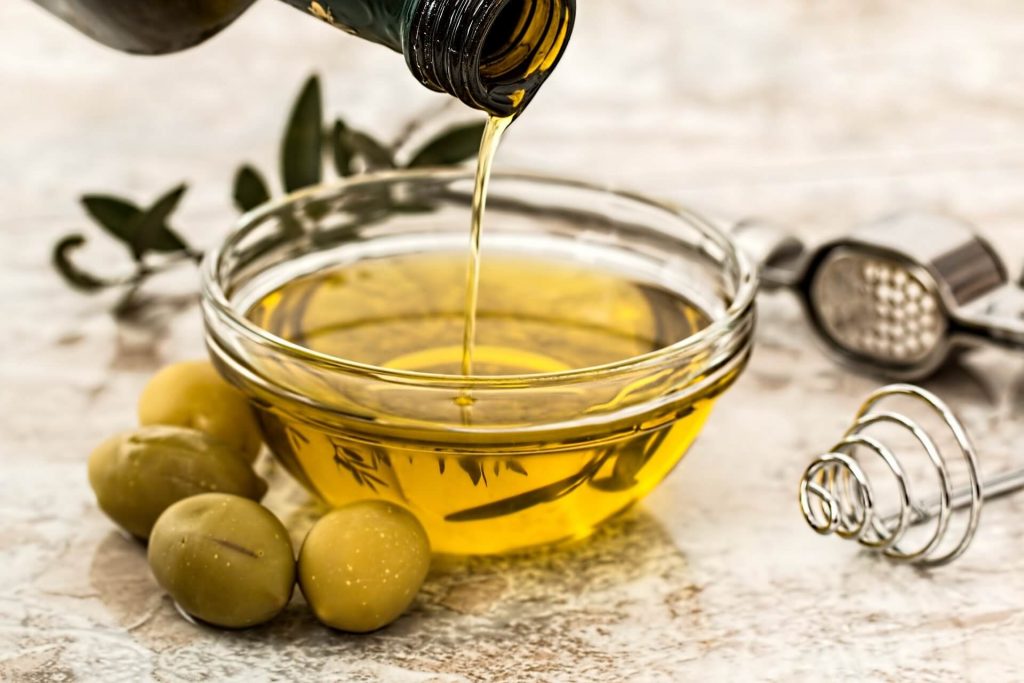
7. Avoiding Rancid Oils
I don’t feel like I need to go into why eating rancid foods aren’t great for your health. If you eat ground seeds or consume seed, nut or bean oils, then they can go rancid fairly rapidly.
With ground seeds, I recommend getting a coffee grinder and grinding what you need when you need and a maximum of a day before you want to use them.
For oils, give them a good sniff, but learn to use what your oil of preference should smell like when fresh and when rancid.
With fish oils, it’s easy to tell because they leave a fishy after taste, which if you are taking a supplement is a red flag that it is rancid.
8. Spotting The Smoke Point
When using cooking oils, you will notice they all have smoke points, which is the point at which the oil will oxidise and can cause issues with inhalation and eating the foods if done on a regular basis. This is something else you can look into as there is so much controversy on both sides of the argument. However, both olive oil and coconut oil have high smoke points and a lot of nutrients, so are a great alternative.
9. Anti-Nutrients & Digestive Issues
Some plants, particularly grains, legumes, nuts and seeds, have protective coatings to prevent them from being over consumed by predators, and these can make it difficult for you to absorb all the nutrients, meaning you have to eat more, and you may get digestive issues (depending on your body and tolerance levels).
So for example, beans often contain lectins which may interfere with the absorption of minerals such as calcium, iron, phosphorus and zinc.
Others such as lentils, when soaked, the phytic acid gets activated which can help make nutrients more available to your body.
Lectins can be reduced by soaking and the cooking process. The principle remains the same for activating nuts by soaking them heating them. This is a great article on anti-nutrients that may cause digestion or absorption issues.
In all honestly, many of these foods can be prepared in ways that not only improve the nutritional value, reduce any digestive issues they give you, but also reduce cooking times and learning how to cook foods properly can help you to make more delicious meals.
So I recommend researching one grain, seed or nut at a time and getting used to preparing that properly and see which ones have the greatest benefit on your health when you prepare them fully.
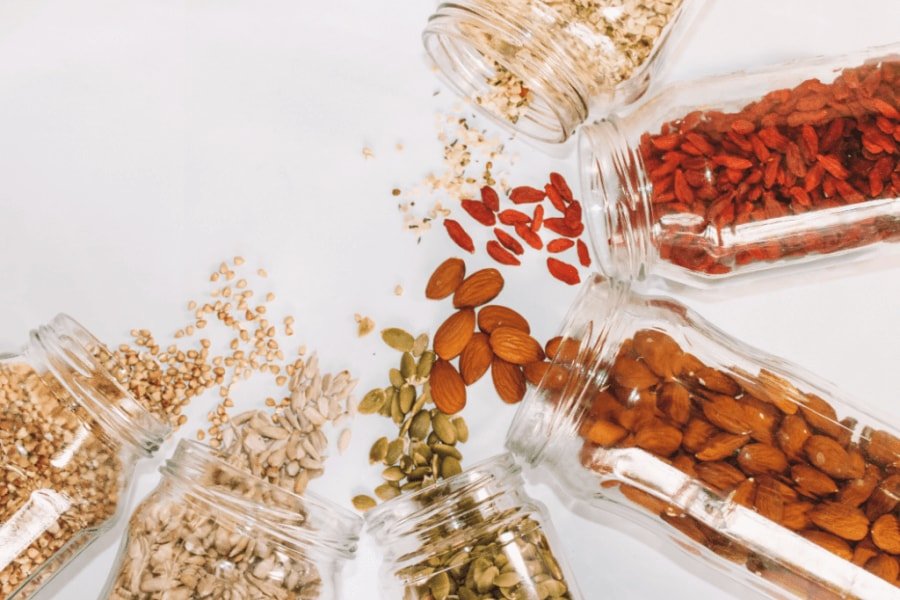
10. Allergens
As you may have spotted so far, a lot of the mentioned foods can trigger allergies. Nuts and seeds are common anaphylaxis triggers, although technically anything that contains a protein could trigger an allergy.
Apple, apricot, cherry, kiwi, peach, pear, plum and strawberries can all cause anaphylaxis. And the 12 allergens that in the UK have to list contain not just nuts and seeds but also lupin, celery and mustard.
There is also coeliac disease, which is a certain reaction to gluten, and various inflammatory conditions which can be easily triggered by certain plants cereals and grains. It is important that when moving to a vegan or vegetarian diet, that you do so gradually, and pay attention to anything that may be upsetting your digestion or health.
There are a number of grains that are gluten free but require a bit of research to learn how to prepare them properly; such as amaranth, arrowroot, buckwheat, flat, millet, quinoa and teff.
It is worth keeping a food diary if you are transitioning and even if you aren’t but you are getting funny health symptoms, recording what you ate and any symptoms that follow in the next few days can be very helpful for working out what could be upsetting your system.
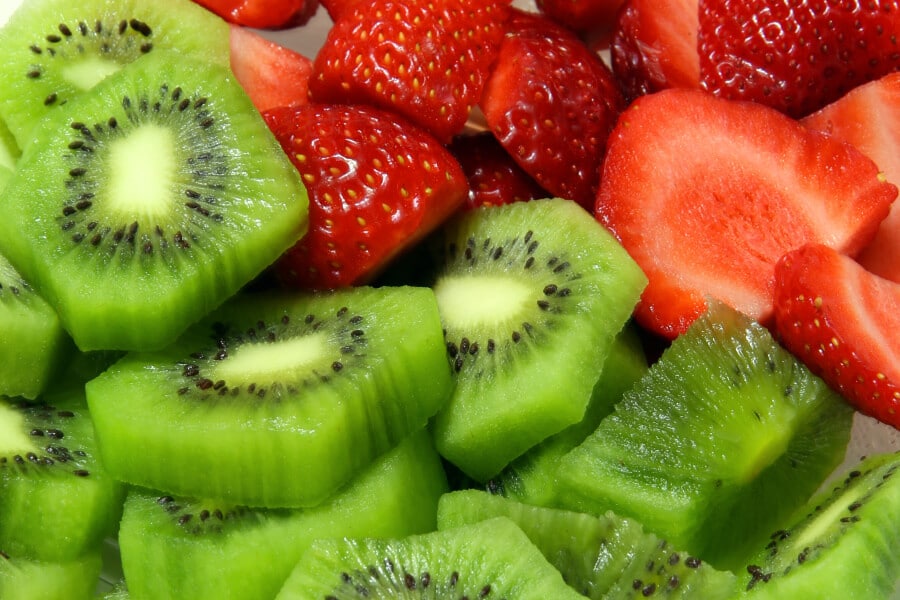
11. Gut Issues
One great thing about a number of people moving on to a vegan diet, especially if they want to get healthy, but sometimes it can take our gut a little while to catch up. We cultivate strains of bacteria in our gut based on what we eat as we need the bacteria required to break our particular diet down.
When changing our diet, we can get cravings whilst the old bacteria die out, and if we don’t have enough bacteria to break down the new food, then it starts to ferment in our gut. This means it starts releasing gas, which, when it presses against the gut wall, can cause pain, as well as cause you to expel gas, and cause IBS type symptoms.
If you are transitioning to more plants in your diet, which overall is likely to improve your health, make sure you do it gradually, especially if you are looking to move to a raw diet.
12. Copper Toxicity
This is a highly controversial topic and to be honest, I can see both sides of the argument and believe that with most things, health and wellness, this could be nuanced and different from person to person. We need copper in our diets to help with joints, ligaments and bones.
There are some schools of thought that if someone eats a diet rich in vegetables, that they could end up with copper toxicity. The symptoms of this look very similar to oestrogen dominance, heavy periods, painful periods, PMS, sore or fibrocystic breasts being a few of them.
There are more general signs of copper excess that should be treated urgently are headaches, fever, passing out, feeling sick, throwing up, blood in your vomit, diarrhoea, black poop, abdominal cramps, brown ring-shaped markings in your eyes, yellowing of eyes and skin (jaundice), feeling anxious or irritable, having trouble paying attention, feeling overexcited or overwhelmed, feeling unusually sad or depressed, sudden changes in your mood, kidney conditions, liver damage or failure, heart failure and brain damage. If you have any of these symptoms please speak with your primary care provider ASAP.
Some studies suggest that copper absorption in the blood is lower in vegetarians and vegans and therefore, even though this population may be consuming more copper, it isn’t being absorbed, it is just being excreted with bile. However, there are alternative theories that copper is stored in the blood temporarily and then it moves into the body tissues where it is stored, and therefore can be read in hair mineral analysis.
To be honest, even if copper toxicity is an issue for vegans, it might not be the vegetables causing it, but potentially the copper IUD, or even a zinc deficiency as zinc and copper are antagonists and to deal with excess or deficiency of one or both, you usually need to supplement with both together. However, copper supplementation should be avoided if you have thyroid issues as it may cause further issues.
You can test for copper in the blood, but if people who do hair mineral analysis are correct, that may not be the most helpful measure. Equally, as the symptoms are similar to those of oestrogen dominance, a hormone panel might be more helpful.
Zinc deficiency is an easier test to administer, and you can do it yourself at home which is a zinc solution you drink and wait for the awful taste. The longer it takes to come, the more deficient you are. There are also a number of other home tests although the solution is the cheapest to administer and fastest to get a result (although the result is up to you to interpret).
If you think you may have copper toxicity, you can balance out with adding more zinc to your diet, which luckily is found in lentils, chickpeas, beans, nuts seeds, cereals and various grains. Or you can take a supplement if you feel it is needed.
In all honesty, if you think copper and zinc are issues for you, it is worth working directly with a nutritionist, dietician or naturopath who can help you navigate this.
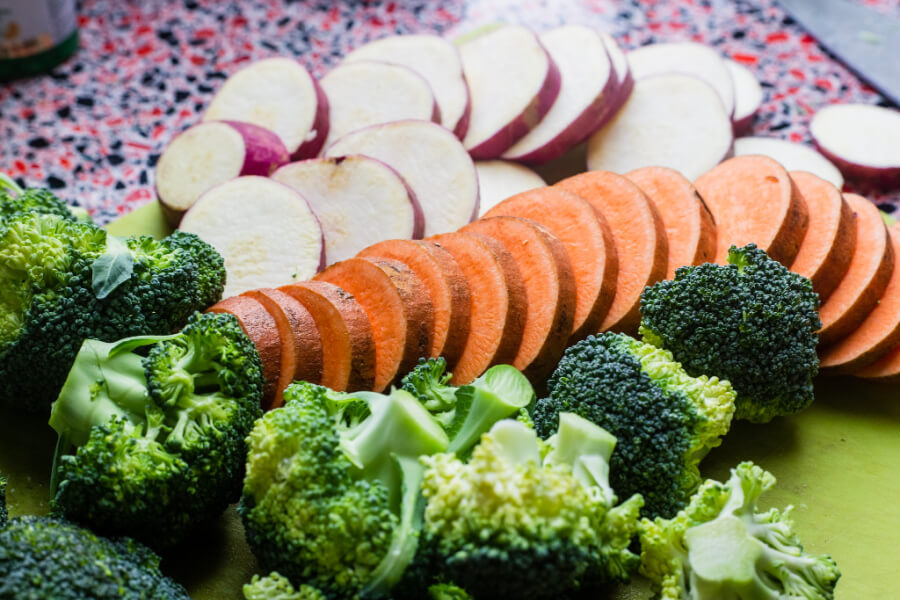
13. B12 Supplementation
B12 is more efficient to get from animal protein, however it can be gained from supplemental sources such as blue green algae, but it is a necessary vitamin because we don’t make it ourselves and it helps make DNA, and to keep the nerve and blood cells healthy.
It is also thought to be helpful for fertility in that a deficiency may: cause issues with ovulation (and therefore periods and hormones such as progesterone and thyroid), but also disrupt normal cell division, impair egg development and cause implantation difficulty and complications.
In can cause fertility issues in the male partner too, with low motility or low sperm count, or sperm with DNA damage as well as cause low libido or premature ejaculation.
Usually with B12, supplementation is a good idea, I personally like to take a a sublingual form either methylcobalamin or hydroxycobalamin form, but you need to speak to someone about the best administration and type for you.
Note, that if you have had part of your bowel removed or even IBS, Crohns without surgery or any other gut issue, particularly with your terminal ileum, you may not have the part of your gut needed to absorb B12, so speak with your primary care practitioner as you will need testing and alternative administration forms that your body can take such as injections.
Additionally, a final note on B12, if you have a B12 deficiency issue, it sometimes goes hand in hand with a folate deficiency, so it’s worth getting both checked.
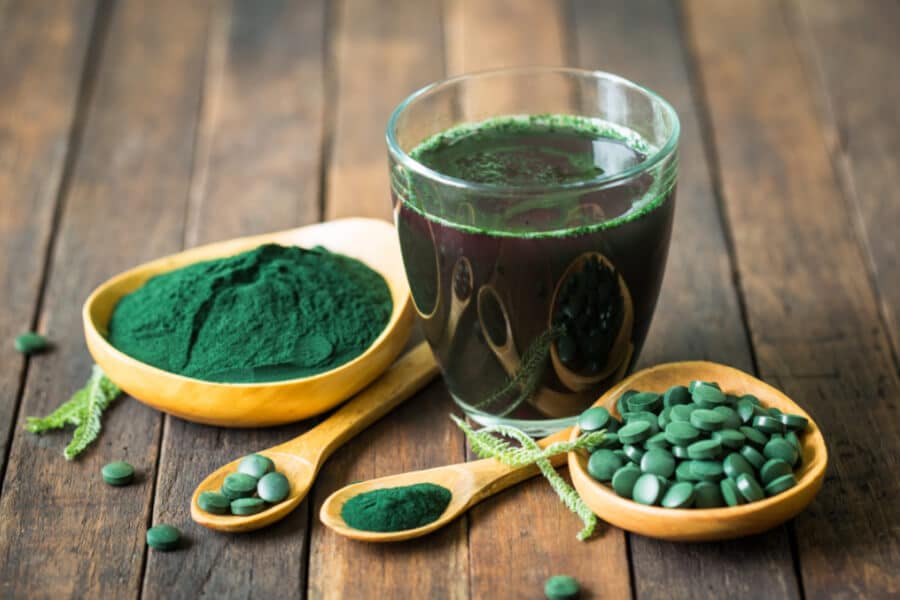
14. Iron
I left this until last as it feels like a bit of a vegan cliche, but it is important. Iron is needed for the production of haemoglobin, the red substance in our red blood cells that transports oxygen around the body. Iron deficiency causes symptoms such as iron deficiency include dizziness, fatigue, headaches and migraines, weakness, light headedness, irregular heartbeats, shortness of breath, pale or yellowish skin, cold hands and feet, hair loss, dizziness and headaches.
It can also be a cause of heavy periods as well as be caused by them (yes, it’s a viscious circle) and it linked to hypothyroidism and has many of the same symptoms as hypothyroidism. (When a double whammy isn’t a good thing).
Also, you need enough T3, active thyroid hormone in your body to produce enough stomach acid to break down and release nutrients such as iron from food. And yes, low stomach acid can be a problem too.
The only way you can truly tell whether it is your iron levels or your thyroid is to test. For iron, at the very least, it is worth getting a CBC (complete blood count) and Ferritin levels tested. For thyroid, you need at least T3, T4 and TSH tested. In reality, I would love more testing, but appreciate in the UK, it is difficult to get more than these basics through your GP without an endocrinology referral.
There are two dietary sources of iron, heme from meats, which is more bioavailable and non heme which is from vegetables, including dark green leafy veggies such as spinach, but it is more difficult for us to absorb.
So, if your iron levels are low and you are looking to supplement, the standard go to is iron sulfate (funnily enough, I did a whole A-Level chemistry project on this), which can be hard of the digestive system. I usually suggest looking into Iron Biglycinate along with a vitamin C supplement which doesn’t cause constipation or nausea (which is why this form is recommended during pregnancy).
Summary
OK, there are a few other considerations that are a bit more personal, but I wanted to get you a few starters to help you with your journey. Being vegan can be tricky if you have period problems, however I hope you that this helps you with knowing where to research on your journey to plant based, vegetarianism, or veganism. I do highly recommend if you are starting out or having symptoms of any kind, not just period related symptoms, that you work one to one with a nutrition professional who is an expert in vegan diets to help you with your personal and unique needs.



